The main pests of gooseberries are the gooseberry moth, gooseberry moth, and sawfly. The fight against these harmful insects must begin in early spring, otherwise you may be left without a harvest. In addition to treating gooseberries with pesticides, be sure to carry out preventive measures, which are very helpful in controlling pests.The use of folk remedies is also quite effective; they are usually used in the summer, when the harvest is ripening.
|
Spring treatment of gooseberries against diseases and pests is carried out before buds open. |
| Content:
|
Gooseberry moth
Description of the pest. The moth is an inconspicuous nocturnal butterfly that flies at dusk and at night. During the day it hides in the bushes. In spring, butterflies lay eggs in flowers, but they can also lay eggs on leaves. The flight lasts just over a month. Mass flight is observed from May to mid-June. The pupa overwinters under bushes at a depth of 2-5 cm.
|
In recent years, the gooseberry moth has begun to actively damage black currants and raspberries. |
Nature of damage. The berries are damaged by the caterpillar, which eats the pulp and seeds. She entangles damaged berries with cobwebs. As a result, they dry out and fall off. The fallen cocoon contains a pest that goes into the ground and pupates there.
Measures to combat gooseberry moth
In spring, gooseberries and all neighboring plantings are treated with Karbofos. This significantly reduces the number of butterflies in the plot. During the day, some of them hide on the treated bushes and die from the action of the pesticide. After flowering ends, use:
- Aktellik. The duration of the protective effect is 14 days. Early gooseberries are sprayed no later than 20 days before picking the berries;
- Karate, sprayed immediately after flowering;
- when the pest spreads insignificantly, biological products are used: Fitoverm, Agravertin.
As a rule, a spring treatment with Karbofos and one treatment with the listed drugs is sufficient to get rid of the moth.If necessary, gooseberries are sprayed again with biological products 7-10 days before harvest.
|
One caterpillar can eat 5-15 berries. Damages gooseberries and currants, especially red and white ones. |
Preventive actions
When used correctly they are very effective.
- Since the pest overwinters shallowly, in the fall 10-15 cm of soil is sprinkled to the center of the bush. In spring, the pest will not be able to get to the surface. In mid-May, the soil is raked away from the bush.
- For the same purpose, in early spring, film is spread under the bushes. This method is more reliable, as it does not interfere with the growing season of gooseberries.
- In late autumn, the bush is dug to a depth of 5 cm. The pupae freeze out in winter.
- When harvesting, the spider cocoons are collected and destroyed.
Gooseberries usually grow in the same plot as currants, so preventive measures are applied to all plantings.
Folk remedies for pest control
Pollinating bushes with tobacco dust, although recommended to repel butterflies, is, according to many years of observations, completely useless. This does not prevent the fireworm from laying eggs.
Spraying with onion infusion. 50 g of onion peels are poured into 0.5 liters of water, boiled for 10 minutes, and the volume is brought to 1 liter. Spray with cooled solution. This keeps the butterflies away. Larvae, upon contact with the treated areas, are damaged and die.
Gooseberry moth
Despite its name, the gooseberry moth is a polyphagous pest. If the food supply is good, it damages gooseberries and black currants; if it is insufficient, it can feed on apple, pear, and plum trees.
|
Gooseberry moth |
Description of the pest. Butterflies are large, elegant with large black and yellow dots and stripes. They fly during the day, are clearly visible and attract attention.Flight begins at the end of June. Caterpillars damage the berry bush. They form a cobwebby cocoon, which falls off along with the leaves. In spring, the caterpillars come to the surface and feed on young leaves and buds.
The caterpillars overwinter under bushes on plant debris. During the growing season, 2 generations of pests are born.
Nature of damage. The caterpillars are voracious and eat the leaves completely, leaving only veins. In spring, hungry larvae eat young leaves and gnaw out buds.
The greatest damage is observed in the spring, when 30-45% of the kidneys may be damaged. Because of this, fruiting decreases, and the bush becomes leafy only partially. In summer the damage is much less.
How to deal with gooseberry moth
Control measures depend on the growing season. In the spring, after the snow melts, the bushes are sprayed:
- Karbofos. The entire garden is treated with it, not just the gooseberries; guaranteed to destroy a wide range of pests;
- regular Spark (active ingredient permethrin, cypermethrin); used against gnawing and sucking pests. You should always look at the active ingredient on this drug, since Iskra is a brand that produces several drugs with the same name, but with different compositions. If the active ingredient is malathion, then it is ordinary karbofos;
- insecto-biopesticide Biokill; Although the composition contains biopesticides, the drug is dangerous for bees. Well protects crops from various pests.
In the summer, when the butterflies begin to fly, they are caught or made into traps.
When the second generation of pests hatches, strong pesticides are not used, since the berries are already ripening. Biological products are used: Fitoverm, Bitoxibacillin, Agravertin or Akarin.
|
Caterpillars are collected by hand.They collect cocoons without letting them fall to the ground. |
Folk ways
Folk remedies are ineffective against the spring generation of pests and perfectly protect the crop in the summer. Burning infusions are used as remedies. When coming into contact with treated plants, caterpillars and butterflies are damaged and die.
- Spraying with a strong soda solution: 3 tbsp/l of water.
- Treatment with a bright crimson solution of potassium permanganate.
- Infusion of tobacco dust. 3-4 tbsp/l of water is brought to a boil, boiled for 10 minutes, left for 2 hours, filtered and processed.
Prevention. Collection and destruction of fallen leaves. Digging the soil under the bushes. Then the caterpillars will not be able to come to the surface in the spring.
Gooseberry sawfly
Unlike previous pests, it is not so widespread. With proper processing of the crop, single specimens are found. Widely distributed on neglected plantations.
Description of the pest. Butterflies are small, inconspicuous, gray-yellow in color, similar to a fly. The larvae are caterpillars, also small, grayish-green. The flight of butterflies begins during the budding period of gooseberries. Eggs are laid on the underside of the leaf along the veins. The larvae live 15-28 days (depending on the weather and food supply).
|
Gooseberry sawfly |
Nature of damage. The false caterpillar is harmful. In spring, it eats the leaves, leaving only veins. The summer generation damages both leaves and berries. Summer caterpillars are the most voracious; in the absence of proper protective measures, they can eat all the foliage.
Control measures
It is much easier to deal with the spring generation, then the summer generation, the most dangerous and harmful, simply will not appear.
Since butterflies fly out early, before budding the bushes are treated with pesticides: Decis, Karbofos, Kinmiks, Inta-vir, Actellik. With timely measures, the pest is completely destroyed.
In summer, damaged berries are collected, which are clearly visible. In case of widespread pest distribution, Biokill and Agravertin are used. In case of a mass attack, they are sprayed with the same preparations as in the spring: Kinmiks, Karbofos, etc. In summer, bushes are not treated with systemic pesticides such as Actellica. After using the remaining drugs, the berries are collected after 14 days, not consumed fresh, but processed.
|
The larvae (false caterpillars) overwinter in the soil at a depth of 5 cm. During the season, 2 generations of pests hatch. The second generation is much more numerous and causes serious damage. |
Folk remedies
Burning agents are used:
- soda solution;
- infusion of tobacco dust;
- shag infusion. 2 tbsp. for 1 liter of water, boil for 10 minutes, leave for 3-4 hours;
- infusion of tomato tops;
- infusion of onion peel;
- spraying with vinegar.
With the low prevalence of sawfly, folk remedies are quite effective. The only negative is that they are completely washed away by rain.
|
Damaged berries lose transparency, wrinkle, become angular, and color prematurely. The hole through which the caterpillar enters the berry is clogged with excrement. |
Prevention protects very well from the appearance and spread of sawfly.
- Annual spring spraying of the garden is very effective.
- Digging the soil under the bushes in late autumn.
- Cleaning up fallen leaves.
- Hilling up the bushes in the fall with a layer of 15-20 cm. In the spring, the soil is raked at the beginning of flowering.
The main preventive measure is proper care.
Don't forget to read:
Gooseberry diseases: description, photos and methods of treatment ⇒
Conclusion
Gooseberry pests are not as difficult to deal with as diseases. Prevention gives excellent results. Usually one spring treatment is enough to prevent pests from appearing.
You might be interested:
- Recommendations for beginning gardeners on planting and caring for gooseberries
- How to prune gooseberries correctly
- The best varieties of gooseberries for planting in the country
- Treatment of currants from pests
- Treating the garden in spring against diseases and pests
- How to deal with strawberry pests
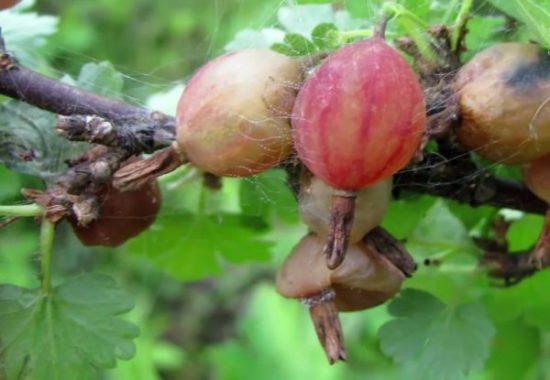
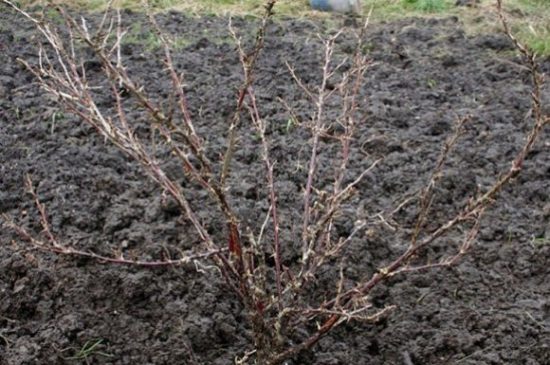
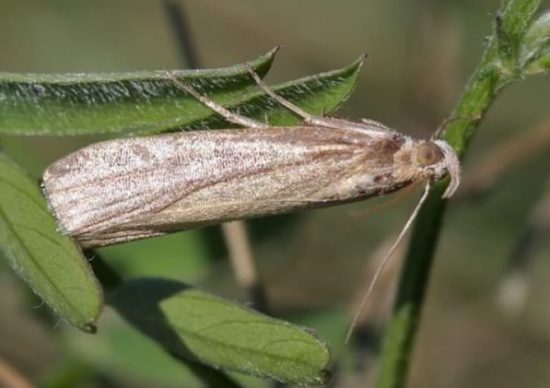
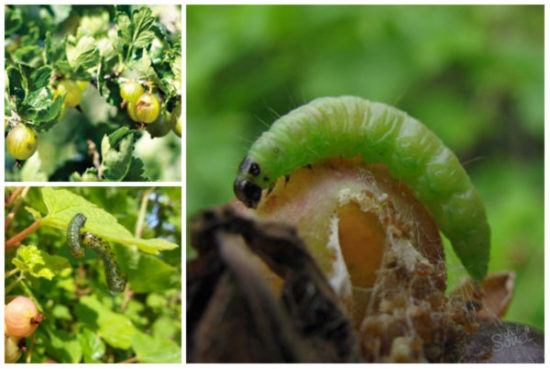

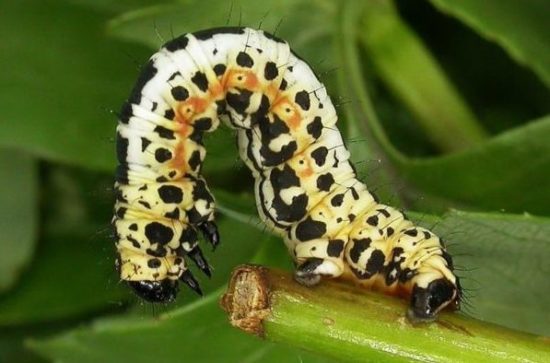

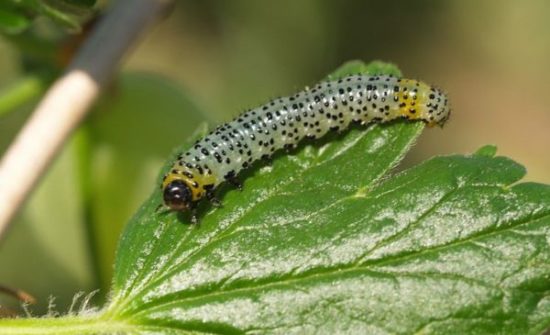

 CUCUMBERS NEVER GET SICK, I'VE BEEN USING ONLY THIS FOR 40 YEARS! I SHARE A SECRET WITH YOU, CUCUMBERS ARE LIKE THE PICTURE!
CUCUMBERS NEVER GET SICK, I'VE BEEN USING ONLY THIS FOR 40 YEARS! I SHARE A SECRET WITH YOU, CUCUMBERS ARE LIKE THE PICTURE! You can dig a bucket of potatoes from each bush. Do you think these are fairy tales? Watch the video
You can dig a bucket of potatoes from each bush. Do you think these are fairy tales? Watch the video
 How our fellow gardeners work in Korea. There is a lot to learn and just fun to watch.
How our fellow gardeners work in Korea. There is a lot to learn and just fun to watch. Eye trainer. The author claims that with daily viewing, vision is restored. They don't charge money for views.
Eye trainer. The author claims that with daily viewing, vision is restored. They don't charge money for views. A 3-ingredient cake recipe in 30 minutes is better than Napoleon. Simple and very tasty.
A 3-ingredient cake recipe in 30 minutes is better than Napoleon. Simple and very tasty. Therapeutic exercises for cervical osteochondrosis. A complete set of exercises.
Therapeutic exercises for cervical osteochondrosis. A complete set of exercises. Which indoor plants match your zodiac sign?
Which indoor plants match your zodiac sign? What about them? Excursion to German dachas.
What about them? Excursion to German dachas.